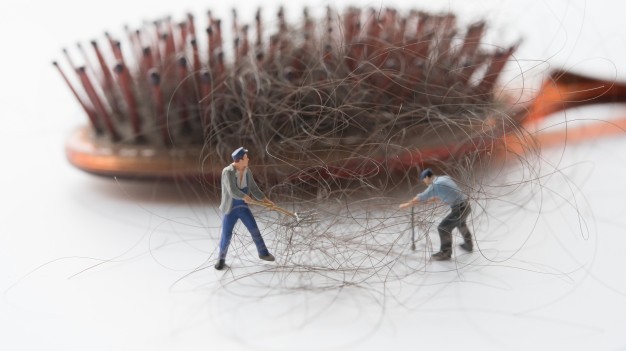Hair Transplant after 10 years most individuals do not care much about their hair transplant.
That’s why some hair transplant patients are disappointed with their outcomes. They may think that the consequences should be more than enough or that it should be higher in volume.
Some also believe all of their woes would vanish with one hair transplant because their issues clearly originate from their hair problems.
Hair Transplant After 10 Years
Hair transplants are usually more effective than hair regeneration treatments. But there are some considerations to consider: An average of three to four months, from 10 to 80 percent of transplanted hair can grow back entirely.
Who Will Benefit From getting a Hair Transplant?

Receiving a hair transplant will boost your look and trust in yourself. For a hair transplant, successful candidates include:
- Men with Male Baldness History
- Women who have thinning hair
- Anyone who has lost any hair after a burn or cut to the scalp
- Hair substitution is not a good choice for:
- Women with a common hair loss trend around the scalp
People who do not have appropriate “donor” hair sites to remove hair for transplantation. People who, after accident or surgery, grow keloid scars (thick fibrous scars). Chemotherapy is another limitation for those people whose hair is lost due to this medication.
Transplanted hair can thin with time, much like normal hair. People with dormant hair follicles can have less successful transplants (sacs that normally produce hair under the skin but no longer grow hair); plasma therapy may help to completely grow back up to 75 percent or more of the transplanted hairs.
For everyone, hair transplants don’t work. If you’re balding or thinning naturally or have lost hair due to an injury, they are primarily used to restore hair.
[READ Perfect hair health: How to have healthy hair]
Many transplants are performed with your existing hair, so they are not as effective for treating individuals with:
- Extensive thinning and baldness
- Hair loss due to chemotherapy or other treatments
- Dense scalp scars arising from injuries
Hair transplant

To put it plainly, a hair transplant removes your hair and sends it to a place where you have no hair. Usually, it’s drawn from the back of the skull, but it can also be taken from other body parts.
Your surgeon sanitizes the region where the hair is cut and numbs it with a local anesthetic before beginning a transplant. To remain unconscious during the treatment, you may even seek anesthesia.
One of two graft procedures is then performed by the surgeon: FUT or FUE. Based on a variety of aspects and constraints, the outcomes of a hair transplant procedure will differ.
Nevertheless, the two most widely used types of treatment, Follicular Unit Transplantation (FUT), called the gold standard of hair transplantation treatments, and Follicular Unit Extraction (FUE), and are meant as reversible hair loss remedies.
During these treatments, hair is transplanted from the permanent zones in the back and sides of the scalp to the thinning and balding regions of the front, top, and crown often called the donor area.
Extraction follicular device (FUE)
Your physician takes these steps to execute an FUE procedure:
On the back of your head, they shave off your scalp.
The surgeon then extracts out individual follicles from the skin of the scalp. You can see tiny traces that have been stripped from each follicle.
The surgeon makes tiny gaps in the scalp and grafts hair follicles into the holes, as with the FUT operation.
Then the surgeon covers the surgery site with bandages.
(FUT) Follicular Unit Transplantation
Often known as follicular unit strip surgery. Your surgeon takes these steps to execute a FUT procedure: The surgeon takes a slice of your hair, usually from the back of your head, using a scalpel.
Usually, the strip length is between 6 to 10 inches long but can range from ear to ear. They close the region with stitches where the scalp has been cut. With a scalpel, the surgeon and their assistants break the scalp strip into smaller parts.
They can break the piece, called grafts, into as many as 2,000 smaller pieces. Any of these grafts may each contain one hair only. The surgeon makes tiny holes in the scalp with a needle or razor where hair can be transplanted.
Through the puncture holes, the surgeon removes hair from the extracted piece of scalp. It’s called grafting. Then they cover the surgical areas with gauze or bandage.
Since hair follicles are taken from regions during these genetically immune to hair loss operations, the freshly implanted hair lasts indefinitely for many patients.
If a person is receiving an FUE or FUT treatment, a hair transplant will last forever.
Since the hair is genetically engineered not to fall out, the permanent region from which hair follicles are drawn gained its name.
However, for several reasons, about half of the patients who undergo a hair transplant opt for another one within about 10 years, including:
Continued hair thinning beyond the initial recipient site of hair transplants due to age. Loss of diameter in the hair shaft due to age
Experiencing other variables in the climate and genetics. In the long run, the hair transplant should hold up.
The hair follicles may thin as you mature, but they will most likely grow at least some hair for the remainder of your life.
If your hair thinning continues, contrary to your previous pattern” of normal hair loss, your hairline will not retreat.
Your supplier can eventually negotiate the plan with you to ensure that your hair does not look patchy or unnatural in the coming years after your hair transplant.
When to meet with a Practitioner
You can talk to the doctor if you feel self-conscious about your hair loss. As a side effect, some medical disorders and drugs can cause hair loss.
Before you are considered a candidate for a hair transplant, you can need to rule out those outside causes.
[READ 7 Most Common Stages of Hair Loss]
Is another session is necessary for a hair transplant?
Likely, the first treatment for hair transplantation would not be the final one.
To obtain the results they desire, several applicants will be advised by their doctor that they require several “sessions” of transplant surgery.
Once their first hair transplant has healed, other applicants are satisfied with the outcome and later opt to attempt to cover out more thinning spots on their heads.
What Would You Anticipate in Ten Years After Hair Transplant?
The possible outcome of hair transplantation ten years after the operation was completed.
When hairs are transplanted to the hairline and crown regions from the sides and back of the head, those hairs retain their genetic programming.”
In general, these hairs are engineered to be permanent; that is, these can regenerate even though they are vulnerable to “shedding” over the normal hair growth period.
Absent infection, disease, or any other disorder that would compromise these hairs’ health for ten years and beyond, they should remain a permanent part of the patient’s scalp.
Possible Side Effects of Hair Transplant
The most frequent side effect of hair transplant is scarring, and with any treatment, this cannot be prevented.
Some other Side Effects of hair transplant
- Infections
- Drainage of the crust or pus near surgical sites
- Pressure in the skin, scratching, and swelling
- Hair follicle inflammation (folliculitis)
- Bleeding
- Sensation deficit around surgical sites
Visible hair regions that do not align or are significantly thinner than the surrounding hair.
How much does it pay for hair transplants?
Hair transplants per session will vary from around $4,000 to $15,000.
The final expenses can depend on:
- The extent of the treatment for the transplant
- Accessibility of surgeons in your field
- The surgeon’s experience
- The Preferred Surgical Procedure
- Health insurers will not pay for the operation, and hair transplants are cosmetic operations.
- Medications for aftercare can also contribute to the final bill.
Limitations for Hair Transplants

Popular treatments for hair restoration have natural-looking outcomes that develop as hair typically does.
While consumers frequently enjoy a high rate of good transplants, a few variables and choices can likely restrict outcomes, including:
Finding the correct clinic and surgeon
Over the years, the technologies used for hair regeneration procedures have significantly changed.
Unfortunately, there are several sub-standard clinics-see our pyramid post on the hair transplant clinic. Find a surgeon who can achieve reliable and productive outcomes.
Continuous hair loss

A transplant would not prevent further hair loss. The freshly inserted hair may last a lifetime, but it could begin to fall out of the hair surrounding the transplant site. For continuous hair loss, there are several therapies.
Facing shock loss
Hair can fall out due to shock after the first few days after the operation. This is a natural and anticipated process for the body’s protection.
Although the hair is gone, after just a few months, the follicles survive and continue to regrow new hair.
Suffering from dangers or side effects
Threats are inherent with medical operations of some kind. Both potential side effects of hair transplantation that only rarely occur include bleeding, fever, and inflammation.
However, with the use of small compresses and moderate antibiotic pills, these conditions are generally manageable.
Selection of sufficient capacity for the donor area
The area of the permanent zones varies from person to person. During the hair transplant, a greater donor region allows further grafts to be removed.
However, if the permanent zone is relatively limited or sparse, you can have to tailor your standards to the amount of coverage that can be accomplished. You can be assisted with this by an experienced hair transplant specialist.
Acknowledging the transplantation does not work for everybody
it is not a perfect treatment. Much progressive hair loss, where hair follicles remain dormant for two to seven years, and those with skinny hair in the donor zone, will have worse outcomes from their hair transplantation treatment.
This, however, does not mean that it is not possible to achieve valuable cosmetic outcomes. It is just that lower standards must be set.
[READ Perfect hair health]
What is the outlook for the long term?
Usually, in the scalp’s transplanted areas, individuals who have had a hair transplant will continue to grow hair.
Depending on The new hair may seem more or less dense depending on:
- Laxity of the scalp, or how loose the skin of your scalp is
- Follicle density in the Transplanted Zone
- Caliber or quality of hair
- Curly hair
Best Hair Transplant in the World
Many who seek a hair transplant should surely realize that this treatment is a dangerous surgery. Before the treatment, a hair examination is done.
Furthermore, it is decided the type of spill and the locations where the procedure should be implemented. In light of these analyses, the volume of hair is determined.
The method is finished in four to eight hours. Taking advantage of the best hair transplantation centers would help guarantee hygienic standards during this procedure.
After a proper hair transplant, normal life will safely be restored one day later. Many who don’t want to offer an idea of the operation go to work after a week or resume their social lives.
World’s Top 10 Hair Transplant
Hair transplantation is not only a procedure done following treatment. The person with the operation continues to see the effects at 3 or 4 months.
First and foremost, the hair transplanted sinks within the week of the operation. After 2 weeks, the appearance is obtained before planting. The hair then continues to develop in 3-4 months.
The patient usually has an ideal look at 7 or 8 months. It is not known as dangerous since it is a local anesthetic treatment. The best canters for hair transplants can, however, be favored against the possibility of different complications.
While several strategies have been introduced in this connection, the FUE technique was most recently implemented. You will hit the world’s 10 best hair transplant centers using the procedure on our website.
Reviews of Hair Transplant After 10-15 Years
My hair transplant was under FUE now at the age of 31 if I lost all my rest hair after 5 10 years (and in my family, all of the men at 50 years are Norwood 6-7). What will the receiver and the donor region do if I retained the usual look?
Response: What are my choices when I keep bald?
Good query! Great question! First, I advise most patients that the development you’re concerned about should be low or end at Prophecies.
I have been in the profession for over 23 years. I have seen two pairs of patients sticking on the drug who looked fantastic and didn’t lose any of their hair after 10 years, either not taking the drugs or avoiding them, who kept calling for further transplants or scalp micro-pigmentation if their donor region was exhausted with so many grafts.
I still emphasize that the practitioner and the patient must create a master plan for their future since hair loss is a gradual procedure. Healthy doctors develop a master plan for their patients to minimize long-term hair loss.
Response: You need a Master Plan
It would help if you had a Master Plan to plan a potential balding before starting the operation.
You should be able to shave your head for a “normal look if your strategy is executed correctly.
Depending on your strategy and final (realistic) objectives, you can even suggest further surgery or SMP (or both).
Conclusion
Hair transplants are a clearly thinning hair treatment choice. The hair transplant effects are deemed final, and you can’t reverse them.
But it doesn’t mean that the care of the hair transplant is the way it appears for the remainder of your life.
Hair transplant after 10 years of having an experienced supplier who knows how to build a sustainable hair transplant template that looks natural is key to your results.
READ THIS NEXT
What is Alopecia areata: Types, Causes, Signs
Lower Back Pain: Can’t Stand Up Straight
How to Permanently Reduce your Appetite?
7 Most Common Stages of Hair Loss: Signs & Treatment
What Are The Best Way To Pop Your Ears

Comments are closed.